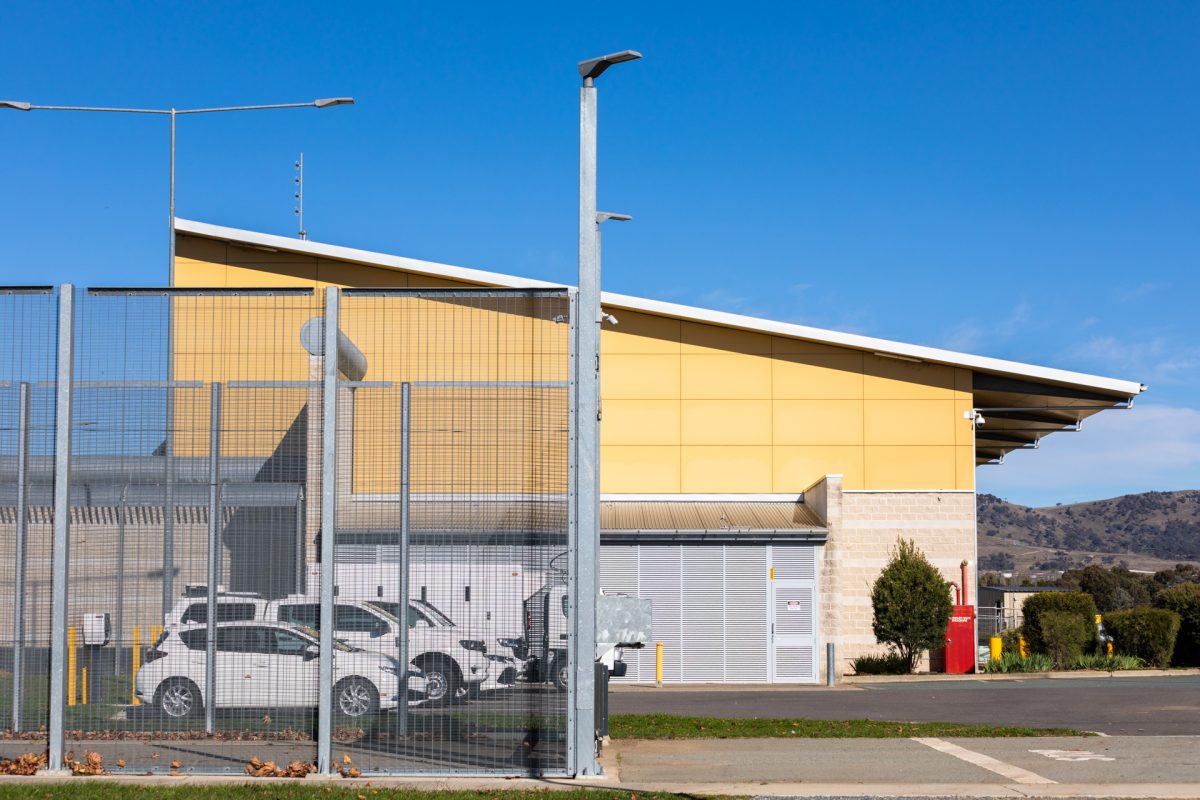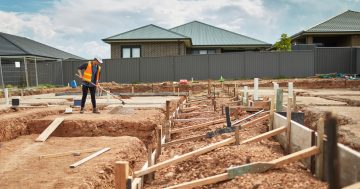
The ACT Government hopes to reduce recidivism rates to 25 per cent by 2025. Photo: Michelle Kroll.
The Minister of Corrections has conceded he’s “not sure” the Government will meet its own goal of reducing recidivism rates to 25 per cent by 2025.
Mick Gentleman and justice officials were grilled during the second day of budget estimate hearings on Tuesday (18 July), where they were asked about the ACT Government’s repeat offender targets.
The hearing was told the government had started with a repeat offender rate of 42.4 per cent in 2018, which reduced to 37.1 per cent by 2019.
However, since that time, the recidivism rate now sits at 37 per cent as of the end of last year, with Canberra Liberals MLA Mark Parton questioning whether the government was confident it could reach its own target.
Mr Gentleman answered that the target remained, but challenges also existed that had made further progress on the goal difficult.
“What we’re seeing is increased numbers of recidivism in certain areas, and while we can assist detainees during [their incarceration] and assist them as they leave the service of the AMC … often what we find is those particular detainees will go back into the same friendship groups and family associations that they had before, and that’s why we’re seeing that level of recidivism as well,” he said.
“It is a challenge for us, I’m not sure if we will meet it.”
Mr Gentleman said despite the less-than-positive outlook, officials in the Justice and Community Safety Directorate (JACS) were working as hard as they could to ensure the target would be met.
ACT Corrective Services assistant commissioner Narelle Pamplin said they had invested a lot of “time and energy” into improvements with the reintegration team, and had examined people who had left the AMC in the past few years to see exactly where they were ending up.
The research found about 50 per cent of people would return to their original housing situation before they were incarcerated, so they were now undertaking risk assessments with detainees before their release to determine their risk of reoffending.
“What that reintegration assessment tells us is what plan we can put in place for them,” she said.
“Where we’re shifting to … is working with their families, using that term very broadly, [and] those people who are supporting them upon their release.
“So that’s the next stage of work that we’re doing to ensure that we can make real change, not only on an individual basis, but on a systemic basis and to ensure those reintegration risk factors are reduced significantly.”
The COVID-19 pandemic was also given as a reason why progress on reducing recidivism may have slowed.
JACS director-general Richard Glenn said more data needed to be made available to see the real impact of the pandemic on this target.
“The trajectory [of reducing rates] has been OK, we will find out whether we’re sustaining or improving that trajectory with further releases of data,” he said.
“I should also add we have a range of programs and activities outside the correctional space … to be able to deliver services to individuals and their families to support them in community, in order to both address recidivism and, in many cases, the representation of First Nations people in the justice system.”
Another bone of contention was delays to the Reintegration Centre, which was referred to as the Reintegration Precinct in the 2023-24 budget papers.
Canberra Liberals MLA Elizabeth Kikkert noted the 2019-20 papers had allocated $35 million to an 80-bed reintegration centre, and then the 2021-22 papers noted that funding was on hold due to storm and prisoner-inflicted damage to the AMC.
She questioned why there was new wording around the centre, and why it appeared to be stuck in the planning stages.
Mr Glenn argued it wasn’t a delay, but was a result of reevaluating the needs of the facility and the community.
“It’s a different concept [now],” he said.
“The reintegration centre was essentially a residential environment for people who are transitioning out of the AMC to the community, [while] the reintegration precinct is designed to be more available to all detainees at whatever point of their reintegration journey.
“We want to start reintegration from the day of admission and run through a process that supports our detainees until their ultimate release date.”
No firm date could be given on when progress could move from planning to the design and construction phases.
















